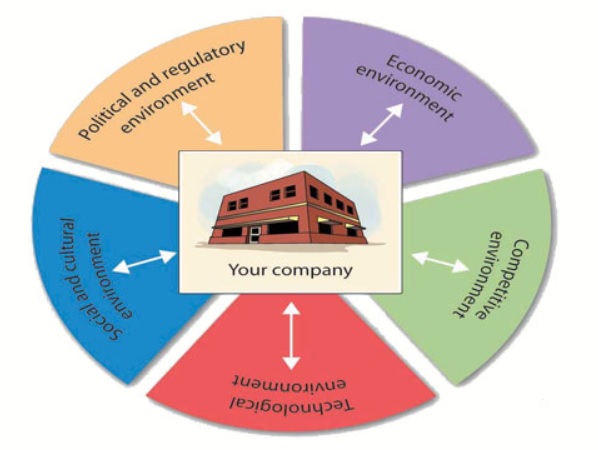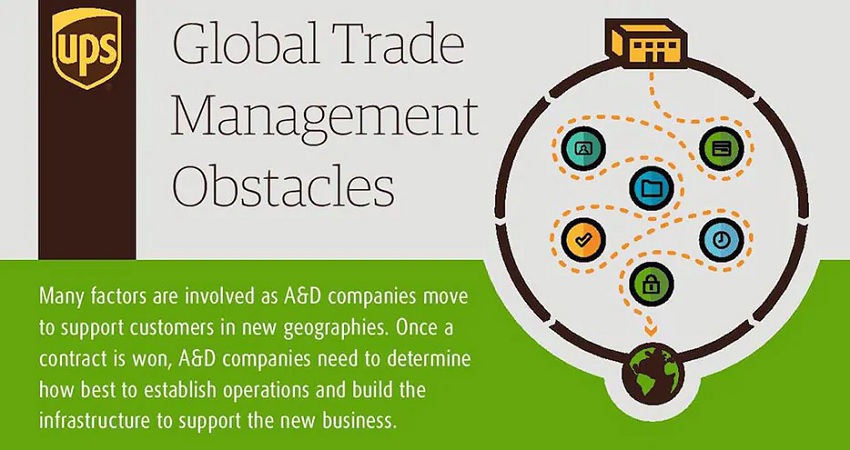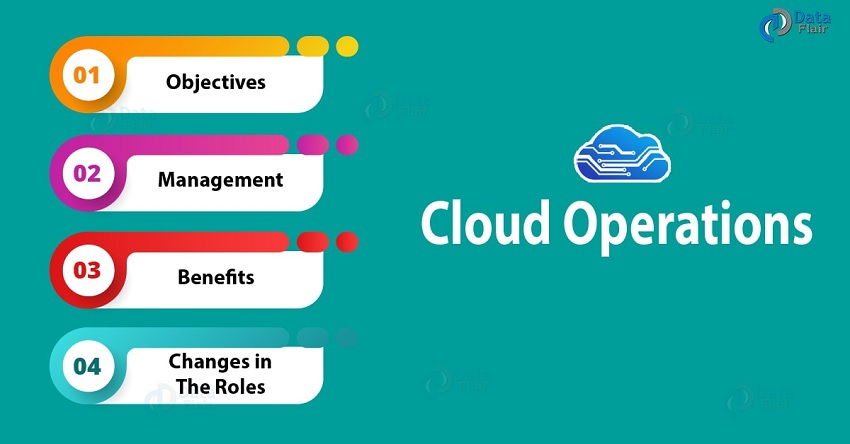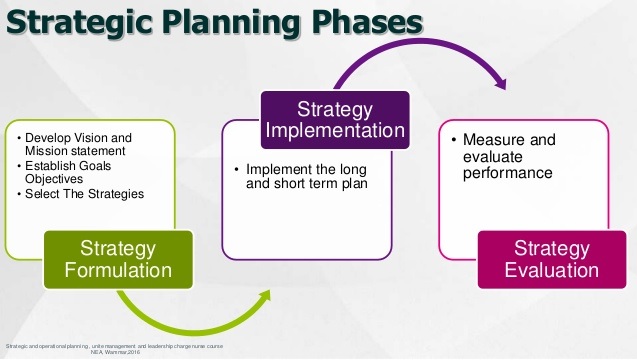 |
Chris Bell | 'The man on top of the mountain didn't fall there.' |
| - Vince Lombardi |
 |
Chris Bell | 'The man on top of the mountain didn't fall there.' |
| - Vince Lombardi |
SNHU - MBA-690 Operations Management and Technology
Written by: Chris Bell - October, 2018
The significant forces that have shaped operations management in the 1970s and 1980s were competition, new entrants, customer bargaining, substitute products and bargaining with vendors, according to Porter (1979) of Harvard Business Review. More recently, operations management has shifted to information systems, protocols, processes, procedures and standardizations, rather than human-to-human trust. According to the Harvard Business School website, under Technology and Operations Management (TOM), “As the world of operations has changed, so have interests and priorities within the Unit. Historically, the TOM Unit focused on manufacturing and the development of physical products. Over the past several years, we have expanded our research, course development, and course offerings to encompass new issues in information technology, supply chains, and service industries.” Many companies have leaned towards offering more services to support their products because it’s a way to increase revenue with current customers rather than trying to market new products to new customers.

The operations management of WesBell Electronics has been impacted by these significant forces because, when the company started in 1988, operations management was held together with relationships, Rolodex’s, telephones and newspapers, compared to the year 2018 with a website, Enterprise Relationship Management System, automated messaging and ISO 9001 standardization. Companies without technology in place in 2018 won’t necessarily fail but will have a challenging time growing and scaling their operations. WesBell Electronics has taken all of the necessary steps to improving operations management and continues to adapt. Their first website was created in 2003 offering multiple wire and cable products for sale. They reformatted the entire website in 2018 to offer products and services for immediately purchase online. Their first ERP system was created in 1994, redesigned in 2004 and redesigned in 2015 to soak in the recent technology as it was created. Things like Customer Relationship Management (CRM) systems, automated order processing, calendar To Do systems, VoIP meetings and finding potential customers online instead of cold calling companies from a phone book. These improvements in operations management has allowed WesBell to now offer services, which are wire and cable harnesses and assemblies, manufactured with tooling and equipment, to all their customers, nationwide. They would have had a challenging time implementing the necessary processes and procedures in the 1990s.
The key obstacles and issues that confronted WesBell Electronics management during the evolution of operations management into the modern era is that the owner was born in 1951 and ran the operation with less than 10 employees through most of the 1990s. This created a lackadaisical atmosphere with little control, little consistency and employees that each wore multiple hats. Things were comfortable until they hired an ISO 9001 consultant as a fulltime employee. This person got the company approved to OSHA and MSHA standards, RoHS and REACH compliant, and ISO 9001 compliant. But it took the entire company to come together rather the one person filling out a bunch of paperwork. It was necessary to bring controls and consistency into the operation which took the help of all of the employees. It was almost like teaching a grandfather how to build a website, but slowly and surely, WesBell overcame the previous era of little control into the new era of collecting and reviewing data to implement continuous improvement initiatives.

More recently, the company is facing the issue of growing past 50 employees that will require changes in health care packages for employees, a different tax structure as a large business and they will have to provide more financial information to the government and IRS to prove that they aren’t treating their 50 employees poorly or setting them up for injury in an unsafe work environment. According to Hamel (June, 2018), of the Small Business Chron, “Many small companies start as sole proprietorships or partnerships, which give a sole owner or a group of owners complete control over a company. Owners of sole proprietorships and partnerships pay income taxes for business profit on their personal income tax returns and are legally liable for business debts.” The government can’t dig that deep into every business with 20 employees, even though they would if they could, but as companies grow, it’s important for labor unions and governments to step in and protect the employees from low wages, poor healthcare, sketchy finances that could eventually leave employees out of work, and of course, OSHA and MSHA are making sure the employees are provided with a safe environment. While they have 30 employees, WesBell is starting to review the additional documentation that it requires to surpass 50 employees because their services offerings are labor intensive. WesBell is hiring faster than ever to keep up with the demands of their customers that need services in addition to their spools of wire and cable. “Large companies are often organized as corporations that pay taxes separately from the owners. Owners of corporations are shareholders who vote to appoint executive board members but do not directly manage the business. (Hamel, 2018)”
Major changes in operations management for WesBell went from occasional meetings and yelling when things went wrong, to risk management, collecting data, reviewing data, corrective action reporting, continuous improvement and mandatory monthly meetings amongst the management team. Before, WesBell could sell a spool of wire and usually blame the manufacturer is something was wrong, but now when they build wire harnesses themselves, they need to accept blame, apologize and rebuild the product. Additionally, they need to review the root cause of the problem and be sure it doesn’t happen again in the future. Instead of simply telling the customer, “Sorry, it won’t happen again”, and yelling at the employee that made the mistake, WesBell needs to thoroughly review each issue. It’s a requirement of being ISO 9001 certified. One of the many ISO requirements that equally relate to small and large businesses, “Review and address the problem that occurred, and grow from your mistakes.

The organizational structure wasn’t changed too much, but instead specifically defined so that each employee knew their job description whether they wore multiple hats or not. In addition to the job description, each department has a specific procedure for entering sales orders, creating a traveler package for production tickets and managing risk. For example, each sales person fills out a 20 question/comment form to assess the possible risks of the job. The ISO.org website created a PDF discussing the main differences between ISO 9001:2008 to ISO 9001:2015, “Another major difference is the focus on risk-based thinking. While this has always been part of the standard, the latest version gives it increased prominence.” It’s the fancy way of saying what my mother used to tell me as a child, “Think before you act!” This has developed an updated philosophy for WesBell employees to consider risk, think about the previous errors related to similar products and be honest with the customer about delivery dates, quality and abilities. Companies can’t just say that they have superior customer service, they need to prove it, customers read the fine print in 2018 and WesBell always remembers etiquette, morals and culture.
WesBell hasn’t always been at this level or strived for more during the early days when the founder was raising 3 children and 10 employees. Business was important to maintain lifestyle but not to become corporate. Luckily, he was an accountant with a degree and grew the company with clean and positive financial statements. Porter (2018) goes on about competitive market niche, “Another difference between small businesses and large companies is that small companies often focus on a niche market, while larger companies tend to offer more products and services to a wider variety of consumers.” WesBell started with a small offering of wire and cable but found opportunity from visiting small sized customers in the New England area face to face. They would get a few new customers a month and today they get 250 new customers per month from online marketing and stricter internal operations management policies in place.
The organizational processes that WesBell uses for their services business is to build a first article for the customer for one piece before starting a batch of 1,000. A quality inspection report that travels with the job and gets a signature from every party involved. The customer supplied specification sheet (CAD Drawing) with the latest revision is compared to WesBell latest revision, confirmed and sent with the traveler. The production manager has the final signature before the product leaves the building. The data are collected, sorted and reviewed for creative improvements to processes, tooling, equipment, etc. Miles Free (2006), of productionmachining.com, explains one of his five concepts to understand about continuous improvement: “Many small, incremental improvements over time will out-achieve a few large “breakthrough” projects over the long run. They will also be easier to sustain and will probably cost less, too.” Years ago, WesBell accepted orders that were simply described over the phone, along with filing cabinets full of papers that can’t send you any morning reports. Not only was that technology invented but WesBell embraced it and used an ERP system to store their company’s information.
The strategic plan, vision and mission of the company is to help small businesses turn their manual process of making wire harnesses into an automated process using high powered equipment. Not only is it faster and cheaper than doing it by hand but it’s more consistent and passes 99% quality approval. WesBell acts big with their vendors but tries to be small with their customers because they target small companies that need to outsource tedious labor-intensive wire harnesses to an ISO 9001 certified, OSHA, MSHA, RoHS and REACH compliant small business. The operations management improvements that were implemented as WesBell started offering services, has directly related to the company’s mission by using expensive equipment to produce what normally takes minutes with your hands and give them a more consistent product to work with. WesBell hopes to keep them happy with consistent lengths, smooth cuts and prompt deliveries of quality product (services).
The factors that affect productivity are empowering the employees to work together to create improvements and efficiencies. Part of risk management starts before the job, when the employees that will be working on the wire harness get together for a meeting. They discuss each step in the process, who will work on each step and what threatens the ability to create a consistent product with the upmost quality. This helps productivity because it’s important to think before you act, PLAN-DO-CHECK-ACT. According to asq.org, “The plan–do–check–act cycle (Figure 1) is a four–step model for carrying out change. Just as a circle has no end, the PDCA cycle should be repeated again and again for continuous improvement.” WesBell also has a process of reviewing nonconforming product along with feedback from the customer, to look for opportunities for improvement.
The factors that affect profitability include pricing the wire harness with WesBell’s template, totaling the time in labor to complete the first article and buying the best equipment that produces consistent quality products. It’s initially cheaper for WesBell to buy loose piece terminals along with a hand tool when they get a new job. They will cut the wire to length and crimp the terminals to the ends of the wires with a hand tool. This process, unfortunately, isn’t much faster or more efficient than their customer’s process. “Sales representatives are in close touch with consumers; therefore, they are well aware of the consumers’ future purchase plans, their reactions to market change, and their perceptions for other competing products. They provide an approximate estimate of the demand for the organization’s products. This method is quite simple and less expensive. (Nitisha, n.d.)” The more expensive investment into these projects is to buy the terminals on a circular reel that feeds into a foot-pedal press machine, but it requires the purchase of a $3,000 applicator to fit the specific reel. It doesn’t make financial sense to buy the reel and applicator for every job, but when it does make sense, WesBell jumps at the opportunity. Then, with luck, WesBell might get a job from another customer in the future using the same reel and applicator.
WesBell Electronics’ operations management key trends relating to production, quality, resource and information management start with buying quality products from suppliers that deliver on time, and our customer expect that from us, as a supplier, as well. According to The Supply and Demand Chain Executive website, written back in 2006, Tim Vaio says, “Technology and process upgrades at forward-thinking companies clearly show that supply chain excellence is more widely accepted as an element of overall business strategy, and that increasing value to customers is not just management's, but everyone's, business.” He mentions outsourcing as once of the key trends 12 years ago, and it shows today. WesBell has a focused niche of making wire harnesses for devices and appliances because GE doesn’t want to be in the wire and cable business or the metal fabrication business, for that matter. Tesla is in the business of designing exceptional batteries, but not full cars. They outsource 90% of the materials used for their cars because they don’t want to figure out how to be a glass or tire manufacturer on top of designing the batteries. WesBell purchasing employees must get 3 quotes for each product they buy and have detailed reasoning for choosing a product based on quality, not just price.
Viao goes on about outsourcing:
“As many companies step back and examine their core competencies some realize that outsourcing parts or all of a supply chain can be advantageous. With marketplace improvements around (1) information mediums and systems (2) cost and quality of global manufacturing and distribution and (3) product design capabilities companies are gaining additional synergies by outsourcing all or parts of their supply chain.”

The impact of these key trends on WesBell Electronics is to have their sales staff focus on the customer’s needs. Do they want the cheapest and quick option, or do they want the engineered, designed, planned and quality-controlled product? Some indeed want both. But WesBell has adapted to this trend by offering their customers more than one option. For example, the first price is based on buying the wire and components from China and completing the job with hand tools. There’s not much investment, so it’s a short-term option. The second price buys from a quality-approved WesBell vendor, using automated equipment and conducting multiple risk-based-thinking meetings to assure a consistent and quality product. Instead of just embedding a multitude of quality control objectives into WesBell’s process, they ask the customer if that’s what they desire. There’s no reason to quote a customer $10,000 when you could quote them $7,000 because many of WesBell’s customers are building things in their basement rather than being demanding OEMs like GE. GE audits their vendors in search for calibrating tooling and equipment, quality processes, corrective action processes and much more. While small companies are still looking for a quality product, they aren’t inspecting it with a microscope upon arrival.